How To Get The Classic Studio Sound: 70s Rock, Pop and Disco
The 70s gave rise to a multitude of new and exciting genres of music, and with more technology and people behind the productions, the sound took on a life of its own. Here’s how you can recreate it… Roller discos, punks and flares… the 70s provided a surge of new genres and subcultures. Technology moved […]
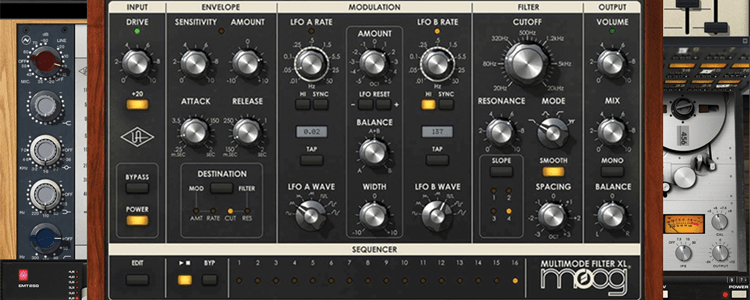
The 70s gave rise to a multitude of new and exciting genres of music, and with more technology and people behind the productions, the sound took on a life of its own. Here’s how you can recreate it…
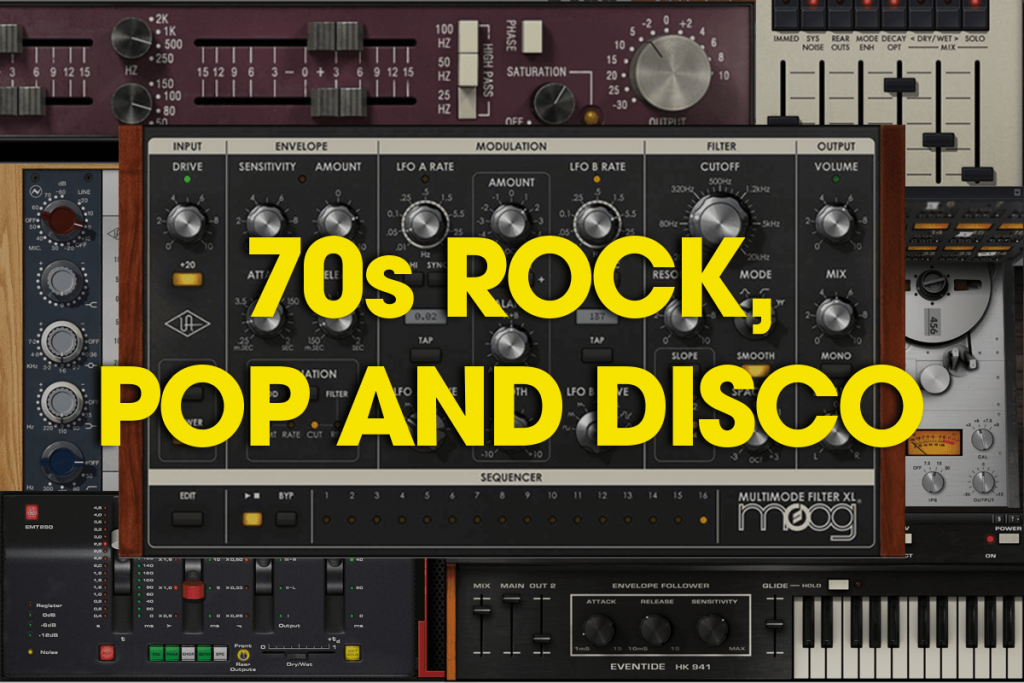
Roller discos, punks and flares… the 70s provided a surge of new genres and subcultures. Technology moved on during the decade, with more advanced analogue circuit boards and the world’s very first digital processors. With this evolution in electronics came a host of new innovations for music technology. Some of the brightest minds in the world were pushing the boundaries of sonic manipulation.
Many of the productions from this era have a certain richness and depth, as large teams of people were involved in making a record. The combined effect of input from a legion of producers, arrangers, musicians, artists, tape ops, engineers and managers, yielded some of the best-sounding records in music history. So here are some of the studio beasts that have brought movement, interest and character to our all-time favourite chart-busting tunes…
Moog Multimode Filter Collection
Universal Audio
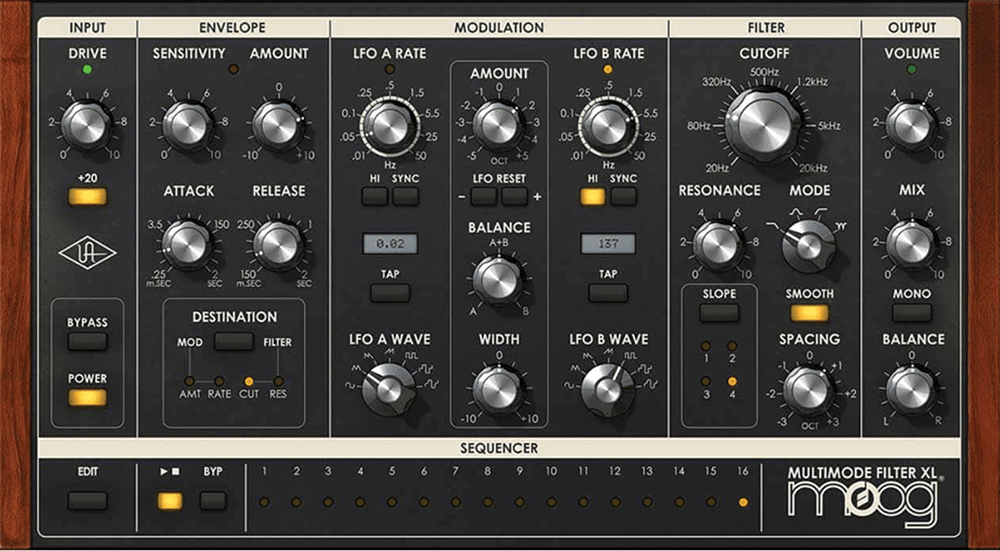
Moog analogue filters are legendary for their musicality and richness. The brainchild of legendary inventor Bob Moog, the sound of his bespoke Moog filters can be heard on hit records since 1967, from artists such as Stevie Wonder, Yes, Kraftwerk, Giorgio Moroder, Gary Numan and The Beach Boys. They were mostly used as part of a Moog synth sound, but now we have the ability to add the Moog filter’s unmistakable character to any audio. UAD has drawn upon various Moog designs to create this rather wonderful emulation. With this collection, it’s possible to add attitude and warmth to tracks using the boost stage. The sequencer and envelope sections are great for bringing in groove and bite and radically changing sounds.
Eventide H910
Eventide
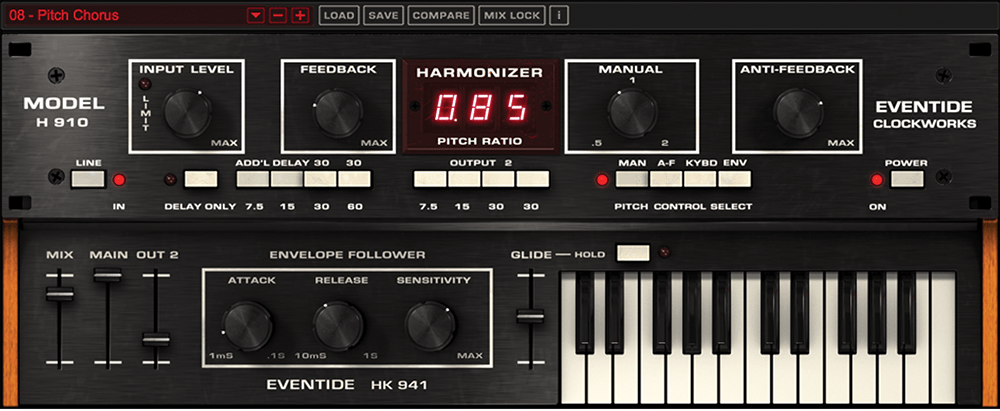
In the mid 70s, the sound of music changed forever. The Eventide H910 Harmonizer was the world’s very first digital effects processor and was subsequently used on thousands of recordings by pioneering artists of the time, adding a then-high-tech sheen to the output of experimental and well-known artists who were prominent in the 70s such as David Bowie, Frank Zappa and even AC/DC. With pitch-shifting, modulation and delay in its sonic armoury, the H910 is the perfect tool to spread guitars, fatten snares, de-tune synths or add slap-back to vocals. Before the advent of Auto-tune, the H910 offered a great way to disguise out-of-tune vocals. When pushed, this beast can also create some cool mechanical sounds, robot and drone effects.
Neve 1073 Preamp and EQ
Universal Audio
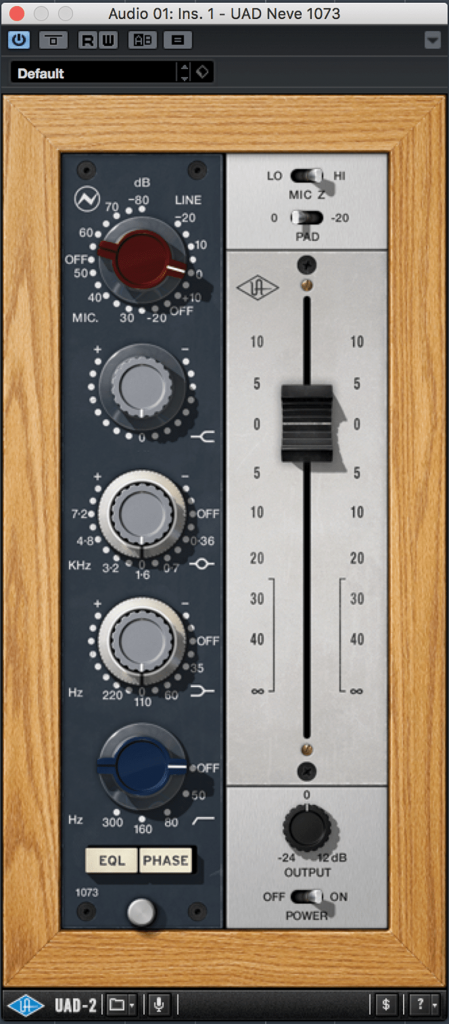
Launched in 1970, the 1073 preamp and EQ unit is a top choice for producers and artists, delivering the hallowed Neve sound. It’s transparent, colourful and loves to be driven hard for vintage 70s tones. For beautiful sheen and tonal shaping, the Neve 1073 is an amazing piece of kit and a regular fixture in the signal chains for many classic recordings.
Roland RE-201 Space Echo
Galaxy Tape Echo, Universal Audio

In 1974, Roland introduced a hugely influential echo effect that went on to become an effects unit that defined entire genres of music. Using a tape on a loop to create saturated, tape delay/spring reverb, the RE-201 is capable of delivering anything from subtle, warm and characterful delays to the mind-bending mayhem captured on records by Pink Floyd, David Bowie and dub pioneers such as King Tubby, Scientist and Lee ‘Scratch’ Perry.
Lexicon 224 Digital Reverb
Universal Audio
![]()
Unleashed back in 1978, the Lexicon 224 Digital Reverb – which was distinguished by its slider-based front panel – was an instant studio classic that almost single-handedly defined the sound of an entire era. With its famously lush reverb tail, its eight classic reverbs and single chorus programme made it one of the most popular digital reverbs of all time. Use Plate and Concert programs for classic 80s reverb. Grandmaster Flash, The Furious Five, U2 and Talking Heads loved it; we love it, too.
Studer A800
Universal Audio
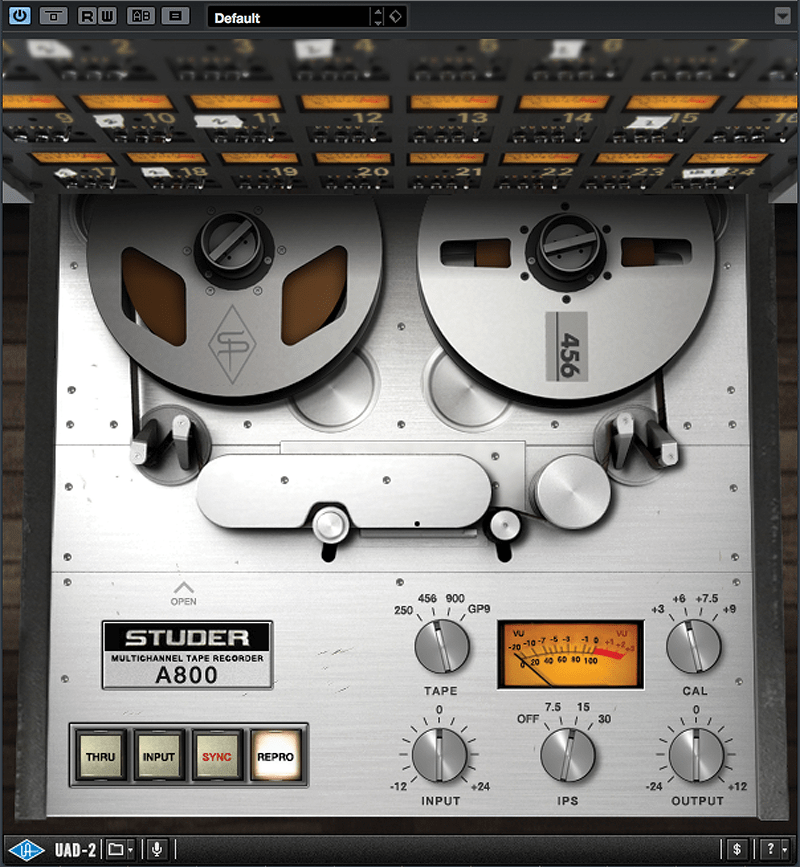
Back in the day, before we had an infinite amount of recording tracks on our tiny computers, artists recorded their tracks onto a gargantuan tape machine with its own operator and room. Something to bear in mind the next time we’re finishing a mix on our laptop while sitting in a coffee shop… Despite its lack of portability, using tape adds unique sonic properties, such as warmth and saturation to a record – this is often referred to when people debate the pros and cons of analogue versus digital.
The Studer A800 was the world’s most popular multi-channel tape machine. With warm analogue sound and solid low-end, you only need listen to Metallica, Stevie Wonder, Tom Petty, A Tribe Called Quest and Jeff Buckley for shining examples of this legendary kit. Use this in your signal chain for a huge tape-saturated sound. Studer has been in the business since 1948 and the A800 has been gracing hits since 1978.
Tutorial: A Moog filter riser
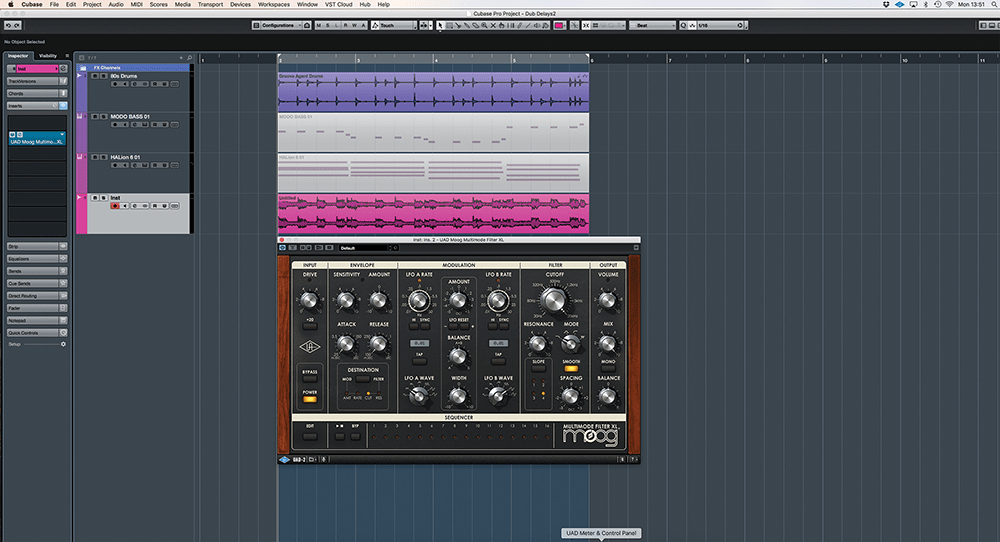
1. Here, I’ve put a groove over some 80s drums using MODO bass and a HALion Rhodes. I’ve mixed this down to a new track and added the Moog filter, you could put them into a buss and use the filter there instead. Drive adds Moog saturation; I’ve adjusted the output volume to compensate for the increase in volume.
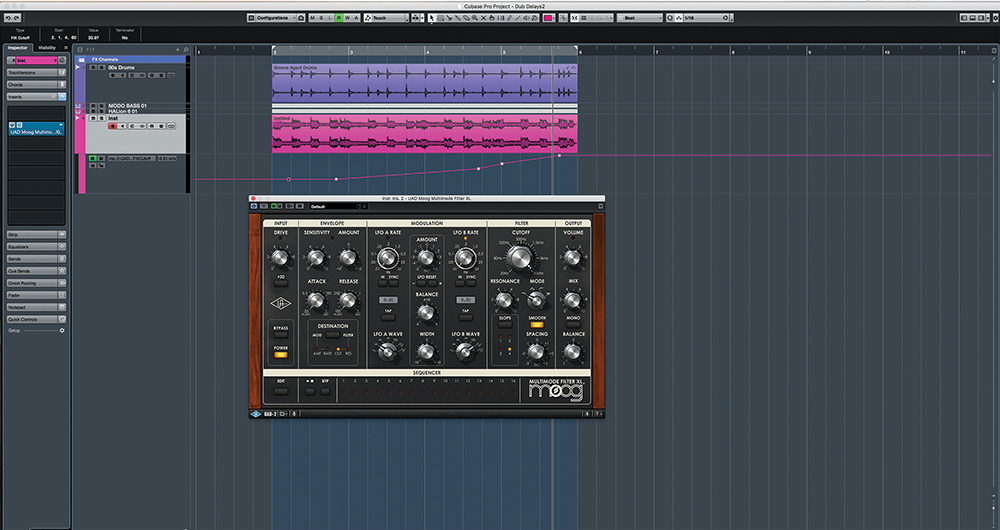
2. Automate the Cutoff from low to high for this groove – 320 to 20kHz worked great. This is only over four bars; I would normally use this technique over 16 or 32 bars for brilliant suspense and coolness. I would also try repeating the first beat of the groove for the first four bars for sublime, phat energy.
Aphex Vintage Aural Exciter
Waves
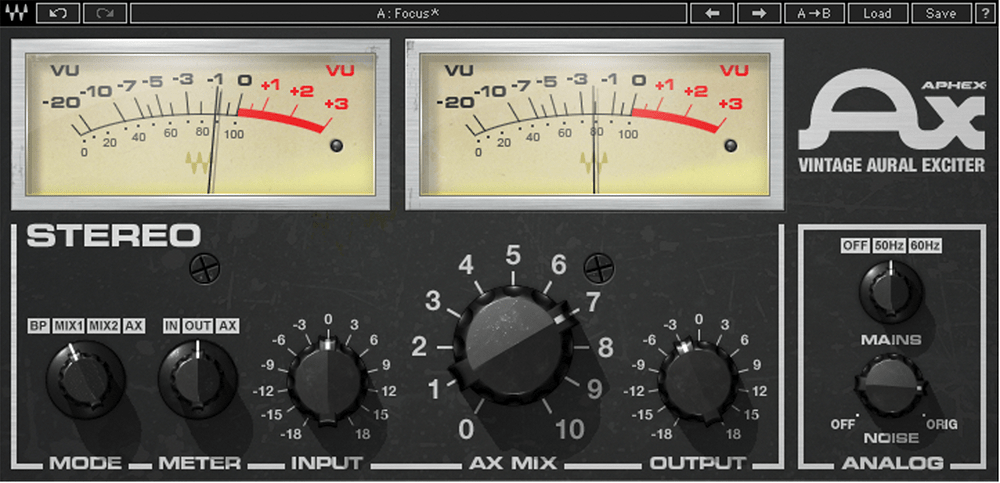
Introduced in 1975, the Aphex Aural Exciter is a highly regarded tool that increases and enhances brightness, presence and vibrancy on vocal and instrumental tracks. Waves modelled its software on one of only a few tube-powered units ever made. The Aural Exciter can add phase shift to a signal and harmonically brings out desired frequencies for detail, clarity and sparkle. Its use was cited on records by Jackson Browne, The Four Seasons and James Taylor.
EMT 250 Electronic Reverb
Universal Audio
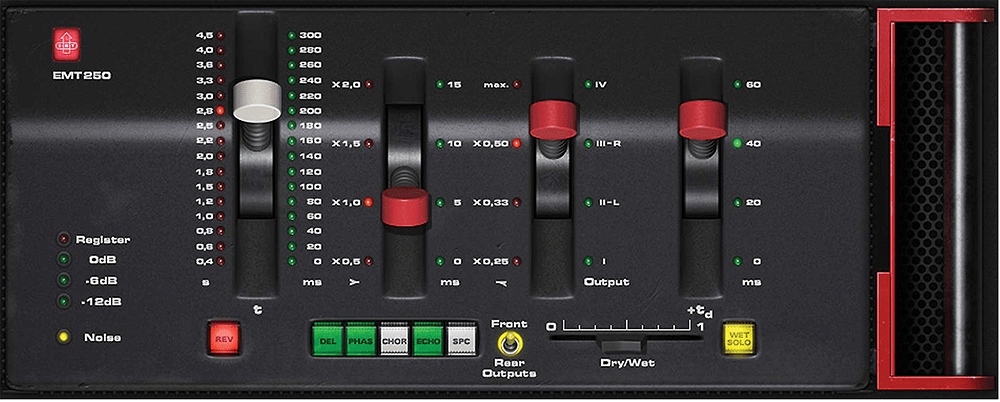
Introduced in 1976 and still regarded as one of the best-sounding reverbs ever made, the EMT 250 was the world’s first digital reverb/modulation unit. It adds distinctive space and depth to drums, guitars and vocals – enhanced by the ability to dial in lush delay, phasing, chorus and echo effects. Since its release, the EMT 250 has left a significant imprint on record-making history in the hands of studio giants such as George Massenburg, Bruce Swedien, Daniel Lanois, Brian Eno and Allen Sides.
Trident A-Range
Softube

A Holy Grail for engineers and producers, only 13 A-Range consoles were ever made. A quirk of its design was that its four frequency bands could sometimes integrate in unpredictable ways, offering artists something better than they’d imagined. Used on many classic rock albums by artists such as David Bowie, Queen, Rod Stewart, Frank Sinatra and Elton John, this is an A-list audiophile’s dream, with a will of its own – and the software version from Softube is a marvellous recreation.
Ampex ATR-102
Universal Audio
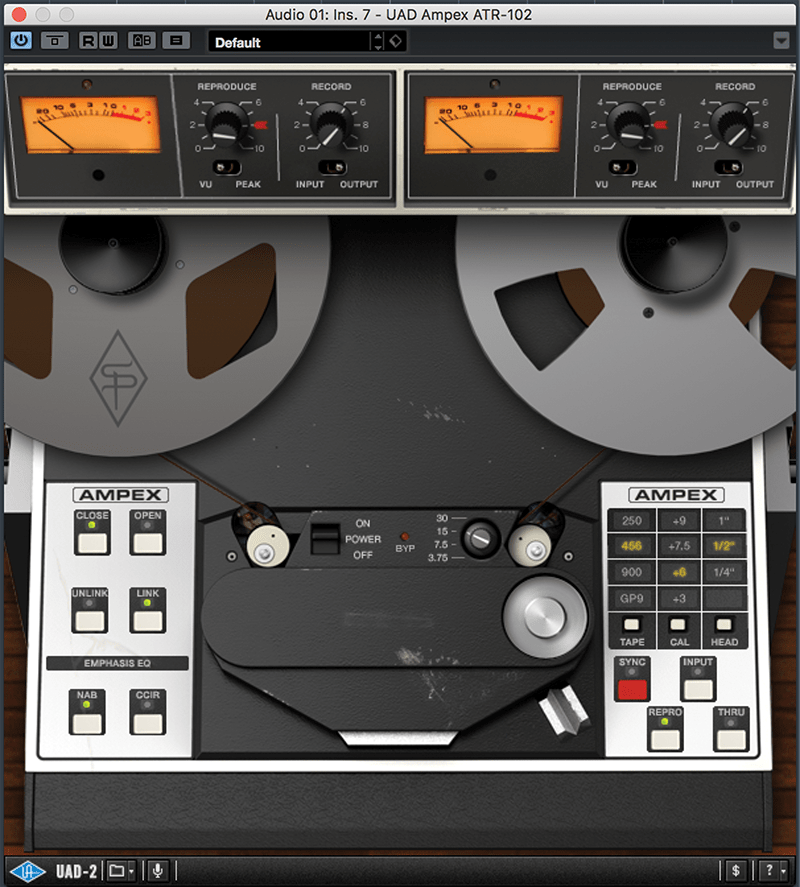
Introduced in 1976, it’s a fine vintage – and the Ampex ATR-102 remains the most popular analogue two-track tape machine ever made. Countless artists have used one to add “analogue polish” – the tape ‘glue’ and colour on busses that helped create sonic cohesion in a mix. According to Universal Audio, it’d be easier to list classic albums that weren’t mixed down on this unit!
Roland Dimension D Chorus
Studio D Chorus, Universal Audio

Famous for creating subtle spatialisation and sweet modulation, the rackmounted bucket-brigade-design Roland Dimension D has been used as a secret weapon in the studio. It has appeard on records by producers and artists as diverse as Brian Eno and Stevie Ray Vaughan. It works wonders on background vocals and strings… and whereas the original – with its four-button front panel – was a model of simplicity, UA’s plug-in adds an ‘All Buttons’ mode for a “tantalising” extra modulation choice.